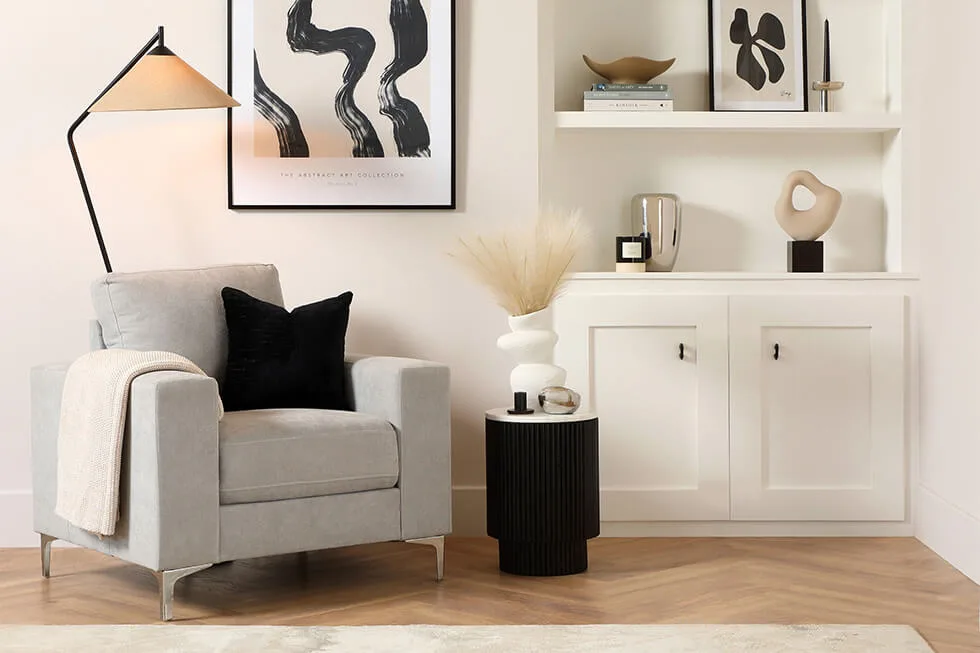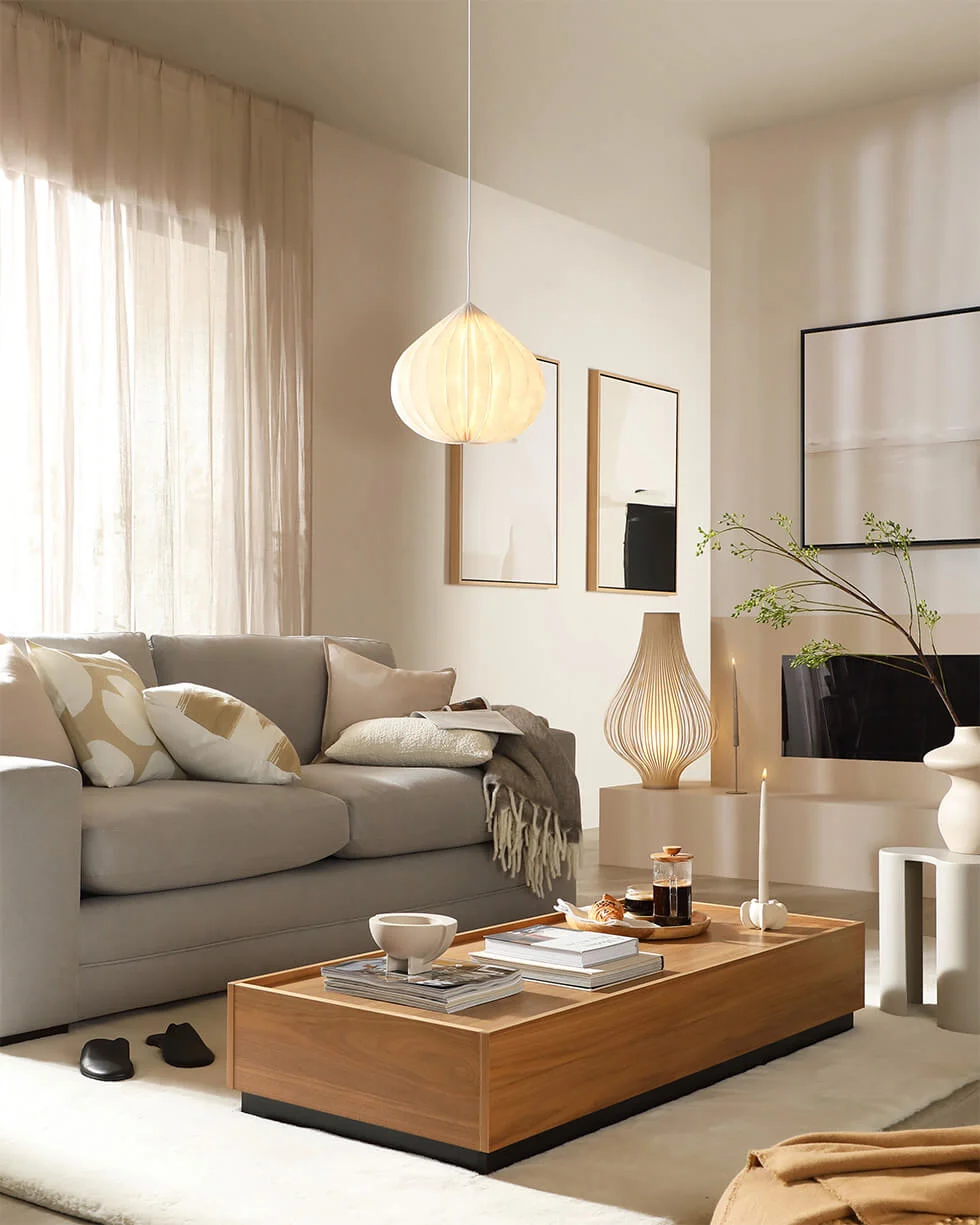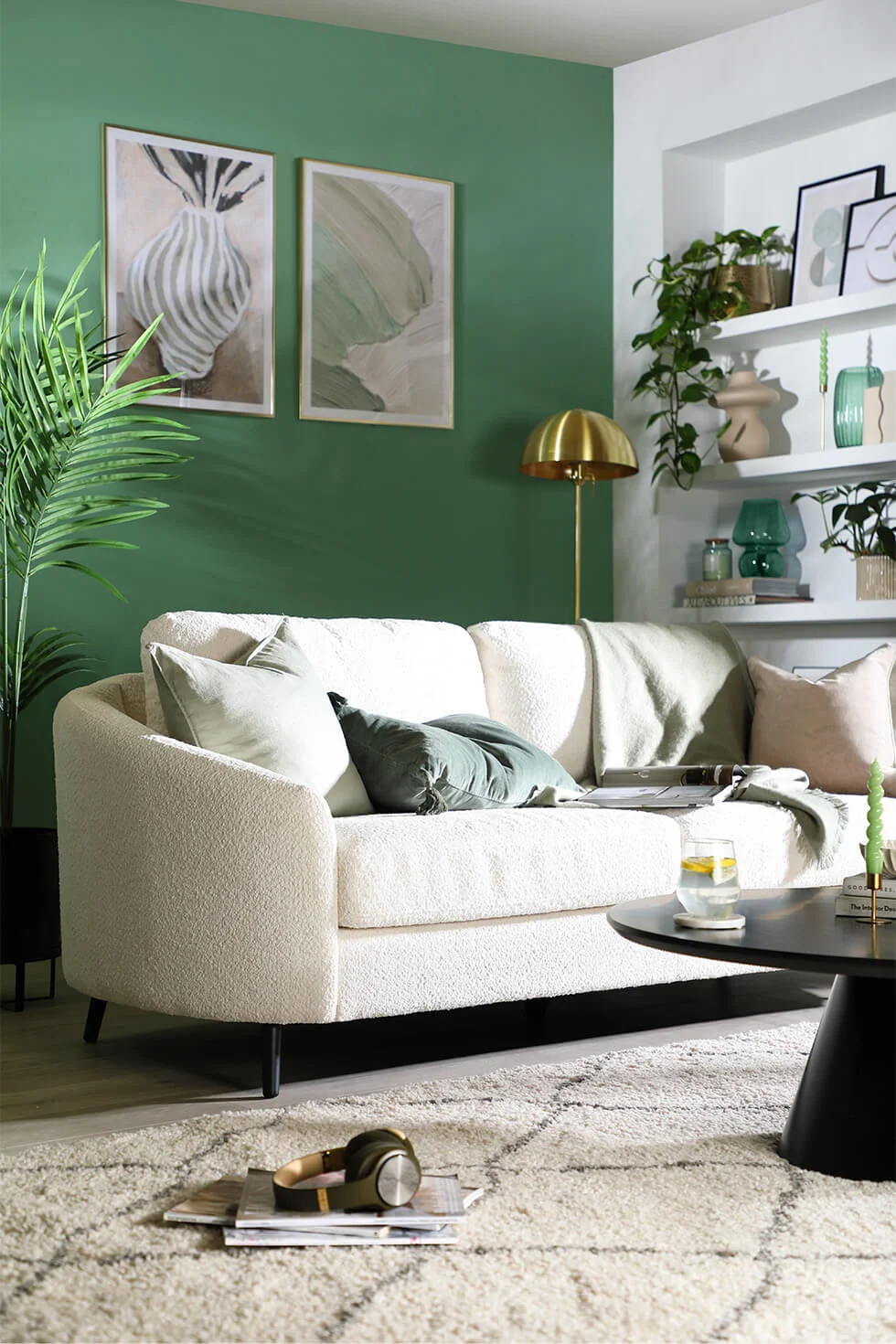
How to embrace minimalist interior design & décor at home
Discover how you can make your home décor more intentional without being boring with the help of these minimalist interior design ideas.
Minimalism has long been the buzzword for clean functional design and leading an intentional way of life. When ‘less is more’ in terms of design, what happens is a refreshing, understated and timeless style.
The great thing about minimalist interior dècor is that it can be incorporated into any part of the home. You can declutter a space, paint it in a neutral colour palette or add more functional storage to keep the room tidy.
From styling tips to colour palette ideas, discover these minimalist interior design ideas for the home.
What is minimalist interior design?
As a décor style, it takes inspiration from minimalist philosophy in which ‘less is more’. Minimalist interiors have a contemporary edge to them, emphasising the architectural features of the home and a tidy, uncluttered space.
The key characteristics of minimalism in interior design are:
- Clean, simple lines
- A neutral colour palette
- Plenty of natural light
- Choosing a mix of textures like wood, concrete, steel and glass
- Prioritising craftsmanship
History of minimalism
The minimalist movement has its roots in the 1960s and 1970s when artists like Donald Judd and Frank Stella started incorporating geometric shapes and lines in fine art. The movement has since grown to include architecture, artwork, interior design and lifestyle. Minimalism has since emerged as a lifestyle philosophy that places importance on being intentional and choosing mindfully.
For most, the goal of embracing minimalism is to ultimately lead a happier, more meaningful life. There are different ‘levels’ or extremities when it comes to the minimalist way of life. Some subscribe to The Minimalists’ rule of only possessing less than 100 items, while others just aim to live in an uncluttered home.
1. Keep clutter at a minimum

The most important step, and one you should revisit regularly, is decluttering. A tidy home will put your mind at ease and set the scene for a relaxing ambience.
If you have no idea where or how to start, check out the KonMari method by tidying expert Marie Kondo. Start tidying by category not location. For example, start with books, papers, miscellaneous items and lastly, sentimental items. The key to the KonMari method is to keep only items that genuinely spark joy and either discard or donate the rest.

2. Curate, curate, curate

The whole idea of minimalism is to have less stuff, and only keep those that serve a purpose in your life. A useful tip when deciding whether to keep or let go of something is to ask yourself this: ‘Does this item have a place in my future?’
If you have too much of one thing, the answer is usually pretty straightforward. Minimalism is the opposite of hoarder behaviour. The worry should be about having too much stuff, contrary to wondering if you might need something in the unknown future. Choose carefully what you want to get rid of and decorate with intention. Minimal interior design doesn’t mean your home has to be bare just accessorise mindfully.
3. Choose a neutral colour palette

A typical minimalist colour palette consists of white, ivory, grey, tan, taupe, and beige. Use this palette for the walls, furniture and accessories like rugs, and even your kitchen utensils for a clean and simple look. However, a minimalist home does not have to be devoid of colour. If you want to introduce colour, pastels are a subtle way to add personality while still brightening up the room.

4. Prioritise storage and space-saving furniture

Having less stuff means being intentional about what you want in your home and making practical (but stylish) choices. If you regularly have guests over, investing in space-saving furniture like an extending dining table is a good idea. Introducing floating shelves to parts of your home like your living room or study will allow you to store items like books or display accessories neatly.
5. Get cosy with Scandinavian décor

Scandinavian décor is known for prioritising clean lines and uncluttered spaces. It is also a minimalist interior décor style that values cosiness. Choose a neutral palette when decorating and pick a sofa with clean lines or soft curves to help set the tone of your living room. Natural lighting is an important element of this interior style, making the home feel bright and airy. Pick sheer curtains to soften the daylight without blocking it out completely.

6. Let the light in

Let in plenty of natural light so that the space feels bright and welcoming. Use light neutrals for window treatments or opt for sheer curtains to maintain a light, airy atmosphere. Choose a light colour on the walls like white or cream to reflect the natural light. Another good idea is to introduce mirrors at key corners in any room so that the natural sunlight can bounce off and brighten the space.
7. Incorporate natural textures

Introduce natural elements like indoor plants, wood, soft upholstery or ceramics for warmth and life — it’ll also prevent a minimalist home from feeling sterile. Adding natural elements and cosy textures sets the tone for a rising trend known as ‘soft minimalism’ where the basic rules of minimalism are given an inviting touch.
Wood makes for a grounding and relaxing base if you’re thinking about flooring or as a pick for furniture texture. Aside from that, soft upholstery like cotton, wool or linen brings a more organic feel to your space. If you want to liven up your space, indoor plants perk up your space and provide some much-needed oxygen. Ceramics made from clay add subtle style by highlighting architectural features and are also free from toxic substances.

8. Choose an open plan layout

Having an open-plan design in parts of the house like the kitchen and living room will make your home feel more functional and efficient in terms of space. Open plan design also helps emphasise the key elements of minimalist design such as maximising natural light, fewer barriers and creating a multi-functional space.
What’s important is the flow of the room. You should be able to move throughout your space with ease naturally. For example, if your kitchen is connected to your living room your dining table should be nearer to your kitchen.
9. Create a focal point

Introducing a focal point to a living room with minimal design will make a statement without overwhelming the room. This could be a feature wall made from wall slats or relaxing abstract artwork above your sofa. Aside from the living room, you can introduce focal points in other parts of the home such as the hallway or home office. Paint an alcove or add statement lighting like pendant lights to highlight specific corners of the room.

10. Zone minimalist space with a rug

Having a minimalist space doesn’t mean your space has to be stark and uninviting. Bring a cosy touch with a rug in the living room which will help create zones in an open plan space. Choose a neutral-coloured rug like beige or light brown to keep it simple. Texture will help soften a contemporary minimalist space. Jute rugs bring a relaxing touch with their rustic style while plush fabric or velvet adds a touch of glamour to your space.
FAQs
- How do I make my house look minimalist?
Focus on the ‘less is more’ philosophy when decorating. Prioritise a tidy space, functional design, a neutral colour palette and lots of natural light.
- What is a minimalist style of interior design?
Scandinavian design and Japandi have minimalist aspects in their interiors. Both styles prioritise clean lines, muted colours, and simplicity while valuing cosiness.
- What is the best colour for a minimalist house?
Choose neutral tones like white, ivory, grey, tan, taupe, and beige. Use this palette for the walls, furniture and accessories like rugs, cushions or vases for a simple look.
We hope you enjoyed reading about minimal interior design and décor ideas. Are you looking for more décor ideas like this? Check out our Japandi guide or feng shui décor tips for more inspiration.
